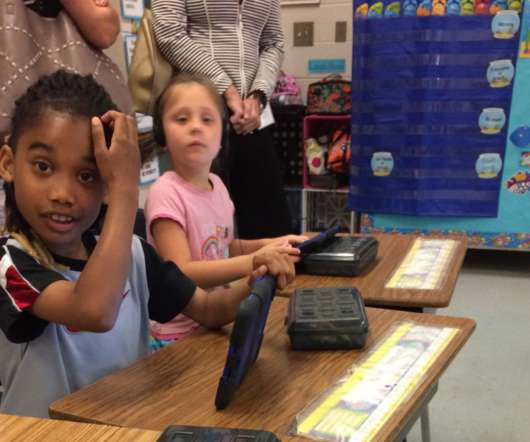Merritt Public Schools: How a Rural Oklahoma District Developed its Digital Learning Program
Education Superhighway
NOVEMBER 27, 2017
Walking into a Merritt Elementary School classroom today, you’ll find students using iPads to figure out math problems and submit their answers, while teachers grade those answers and provide feedback and follow-up support in real-time. Creating Guidelines Around Classroom Technology Use. The Path to a Successful Upgrade.


























Let's personalize your content